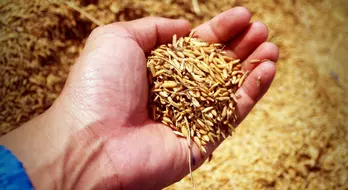Product
Corn Price Trend and Forecast
Corn Price Trend and Forecast
Corn Regional Price Overview
Get the latest insights on price movement and trend analysis of Corn in different regions across the world (Asia, Europe, North America, Latin America and Middle East & Africa).
Corn Price Trend for the Q4 of 2024
Asia
In Q4’24, corn prices in Asia showed a downward trend, mainly due to an oversupply of corn in key producing regions like China and India. Despite favourable weather conditions and record harvests, domestic consumption remained stable, and export demand was subdued. China, which is a significant importer of corn, saw a slow pace of imports, partly because of competition from other exporting countries like Brazil.
Corn Price Chart
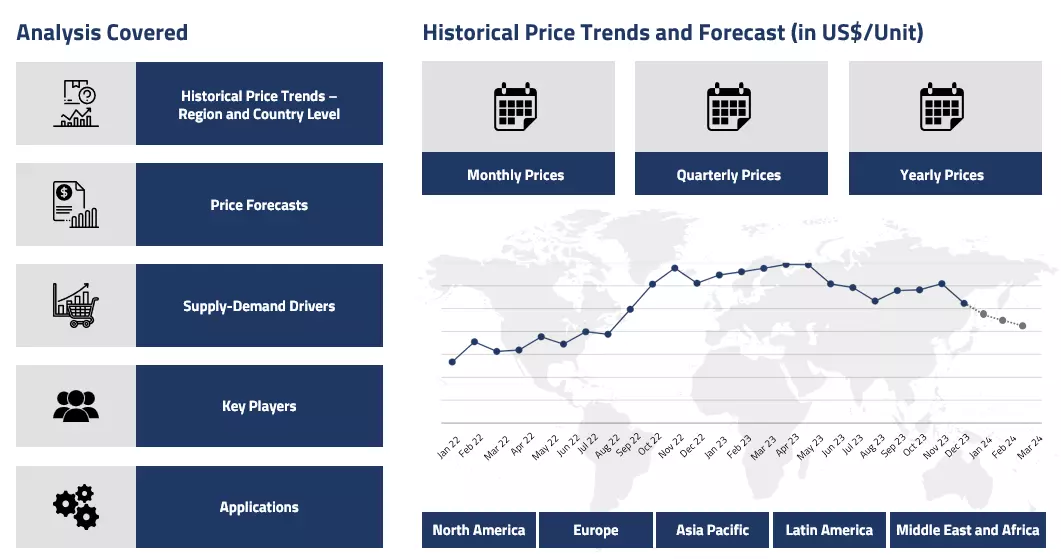
Please Login or Subscribe to Access the Corn Price Chart Data
Additionally, logistics challenges in some regions, including delays in shipments, dampened the demand for corn, further contributing to price declines. Feedstock costs for corn production, especially in China, remained stable, although slight fluctuations in transportation and labor costs impacted overall market prices.
Europe
In Europe, corn prices remained under pressure during Q4’24, mainly due to the abundance of global supply, which kept European market prices lower. The region’s corn production had been high, contributing to an adequate supply that outpaced local demand. While European countries such as France and Ukraine saw stable harvests, they faced stiff competition from other major producers, including the U.S. and Brazil. Additionally, increased transportation costs, including freight rates within Europe, contributed to higher costs for buyers, but this did not significantly elevate market prices. The EU’s agricultural subsidies and policies also helped keep prices relatively stable, despite global oversupply.
North America
In North America, particularly in the U.S., corn prices in Q4’24 faced downward pressure due to record harvest forecasts. The USDA projected a bumper crop, with yields exceeding previous records, which resulted in a surplus. Although U.S. exports to countries like Mexico and other regions saw an uptick, they were not sufficient to counterbalance the overall glut. Farmer sentiment was low, driven by lower commodity prices, higher production costs, and reduced global demand. Additionally, issues related to feedstock availability, such as fluctuations in fertilizer prices, added uncertainty to production costs, though these did not significantly impact the overall price trend during the quarter.
Analyst Insight
According to Procurement Resource, Corn prices may continue to face downward pressure in the early months due to a continued oversupply. However, any shifts in demand from global markets, particularly in Asia and Latin America, could lead to potential price fluctuations. The impact of weather conditions and geopolitical factors may also contribute to market volatility.
Corn Price Trend for the Q3 of 2024
Asia
Asian corn markets experienced significant price pressures during Q3 2024, with declining values reflecting global oversupply and reduced import demand. China, as the world's largest corn importer, played a pivotal role in shaping regional pricing dynamics. The market saw a dramatic shift in import strategies, with Chinese corn imports expected to remain stable at 23 million metric tons, but with significant changes in sourcing patterns.
Corn prices in the region were driven down by sluggish demand, with Chinese imports from Brazil projected to drop by 48.8% compared to the previous year. The pricing landscape was further complicated by Brazil's reduced competitiveness and higher export premiums, pushing Chinese buyers towards alternative sources like the United States. Local market dynamics were characterized by downward price trends, limited domestic consumption growth, and strategic efforts to balance local production with import requirements.
Europe
European corn markets were indirectly influenced by global supply dynamics and international trade patterns. The region experienced ripple effects from the oversupply in major producing countries, particularly the United States and Brazil. Import strategies and domestic production considerations played crucial roles in price determination. While specific European market details were limited in the available documents, the continental market appeared to be navigating complex trade relationships and supply chain challenges that impacted corn pricing strategies.
North America
The U.S. corn market was dominated by exceptionally favourable growing conditions and projections of record yields. Prices steadily declined, with futures hovering near multi-year lows. Domestic demand remained constrained, with limited growth in ethanol production and feed consumption. The crop condition reports showed 67% of the corn crop in good to excellent condition, fueling expectations of yields potentially exceeding 183-185 bushels per acre. Export sales commitments showed modest increases, but not enough to significantly support prices. Domestic sectors like ethanol and livestock feed demonstrated minimal growth, further pressuring price recovery.
Latin America
Brazilian corn markets mirrored the global trend, with prices reaching their lowest levels since September 2020. Reduced export volumes to key markets like China significantly impacted price dynamics. Brazil's corn output for 2023-24 was forecast 12.15% lower at 115.86 million metric tons compared to the previous record year. Export strategies were complicated by changing global trade relationships, with Brazilian suppliers losing some competitive edge due to pricing and geopolitical considerations. The market experienced a substantial reduction in corn exports, with volumes from January through August estimated 30% lower than the previous year.
Analyst Insight
According to Procurement Resource, the prices of Corn are approaching a potential bottom. Historical price cycles indicate potential stabilization, with some projections pointing to a potential price recovery towards late 2025 or early 2026, contingent upon demand revival and supply adjustments.
Corn Price Trend for the First Half of 2024
| Product | Category | Region | Price | Time Period |
| Corn | Agriculture, Farming and Commodity | China | 339 USD/MT | January’24 |
| Corn | Agriculture, Farming and Commodity | China | 323 USD/MT | June’24 |
| Corn | Agriculture, Farming and Commodity | Brazil | 222 USD/MT | January’24 |
| Corn | Agriculture, Farming and Commodity | Brazil | 191 USD/MT | June’24 |
Stay updated with the latest Corn prices, historical data, and tailored regional analysis
Asia
Corn prices have been showcasing a tepid price trajectory in the Asian markets throughout the said period of H1’24. Corn prices decreased in the first half of 2024 due to lower global exports, which offset reduced production in major countries like the U.S., Brazil, and Argentina. India’s corn production is expected to remain stagnant at around 35 million tonnes. However, high ending stocks from the previous marketing year are pressurizing the domestic prices.
Even though global corn production is declining, the degradation in global trade and a downfall in export queries are pushing corn prices down as well. World corn exports are expected to decline further in 2024-25, weighing on prices. In the Chinese domestic markets, the corn prices went from about 339 USD/MT in January’24 to about 323 USD/MT in June’24. Even though this downfall in prices seems steady, with the current supply and demand dynamic, the prices are expected to fall further in the Chinese markets.
Europe
European corn prices also shadowed the sluggishness in the Asian corn markets. The pricing dynamic looked riddled for the most part of the discussed two quarters. Because of the higher freight costs, especially over the Red Sea, the prices of imported corn were anchored in the European markets. However, the import and export exchanges have seen a serious de-escalation over the discussed span. Because of this, the prices were further mitigated. A slight dip in production has been offset by the decline in downstream demands. The feed sector and ethanol industries are showing positive procurements; other than that, the end consumer demands have been largely uncertain.
North America
Corn’s market behavior was no different in the American markets than its Asian and European counterparts. The prices were found to be declining here as well. Because of this, the U.S. farmers held up large stocks of corn despite favorable domestic market conditions, leading to an economic standoff. Many farmers are hesitant to sell, hoping for better prices despite abundant grain supplies and excellent early crop ratings.
The USDA projects U.S. corn inventories to reach a six-year high by September 2025. Buyers, anticipating lower prices due to the surplus, offer premiums for immediate supplies but lower prices afterward. This is causing confusion in American corn markets. In Brazil, the monthly average prices went from about 222 USD/MT in January’24 to around 191 USD/MT by the latter phase of the second quarter. Overall, a humble market performance was observed.
Analyst Insight
According to Procurement Resource, Corn prices are likely to deplete further in the coming months as the inventories are steadily bulking up amidst dull downstream movement.
Corn Price Trend for the Second Half of 2023
| Product | Category | Region | Price | Time Period |
| Corn | Agriculture, Farming and Commodity | China | 384.93 USD/MT | July'23 |
| Corn | Agriculture, Farming and Commodity | China | 356.89 USD/MT | Dec'23 |
Stay updated with the latest Corn prices, historical data, and tailored regional analysis
Asia
A minimal incline in the prices of corn was observed in Asian countries during the third quarter of 2023. The market also demonstrated positive sentiments as the striking balance of supply and demand benefited the traders. The interest of the consumer sector and their spending budget also remained favorable throughout the aforementioned period. However, the avalanche in the supply chains due to extreme weather conditions during the later months of the quarter disrupted a balanced outlook of the market.
The challenges in the fourth quarter became much more intense with the rise in inventories and dim demand outlook. Thus, due to the adverse effects, the spot prices of corn in China declined from around 384.93 USD/MT in July’23 to 356.89 USD/MT in December’23.
Europe
The traders of corn witnessed oscillations in its price trajectory during the H2 of 2023. Initially, in most areas, prices declined due to a significant reduction in consumption rates and a rise in inflationary pressure. The unexpected incline in the cost of transportation and raw materials also pushed the market trend into a downward spiral.
The market also bore the dire consequences of loss of exports and imports amid a significant uptick in inventory levels and the ongoing Isarel-Hamas crisis. However, the demand scenario from the downstream industries improved slightly during the end of the year, giving hope to the traders for the next quarter.
North America
The harvest season, particularly in the Asian countries and Brazil, resulted in a rise in imports, which was not reflected well in the price trend of corn during the third quarter of 2023. On the other hand, the US agricultural sector faced the ill effects of the hot and dry conditions which disrupted the cycle of crop production and lowered the confidence of consumers in this sector. In addition to this, the food and beverage sector experienced a slight relief in inflation, which led to the reduction in the cost of related commodities and, in turn, the prices of corn in both Q3 and Q4 of 2023.
Analyst Insight
According to Procurement Resource, the price trend of Corn is expected to remain stagnant in the upcoming quarters as the demand and the overall dynamics of the downstream industries are not estimated to improve significantly.
Corn Price Trend for the First Half of 2023
Asia
Corn experienced a depreciating price trend in the Asian region during the first half of 2023 as surplus corn crop was available owing to bumper harvest in producing nations. The Chinese domestic market observed an approximate depreciation of about 8% as the average spot prices declined from about 415 USD/MT in January’23 to around 380 USD/MT in June’23.
trend turned out in this manner as farmers shifted their focus to corn crops amid market uncertainties around other agricultural products. Moreover, there was less consumption and lesser demand, and overseas trade had become cheaper compared to the previous year since the supply chains were restored and the crude oil prices also started normalizing.
Europe
Contrary to the Asian Corn market, the European Corn market witnessed mixed price trend throughout the first half of 2023. As the Black Sea deal between Russia, Ukraine, and the United Nations was under threat, the suppliers started hoarding corn supplies to move it to higher profits. So, the prices rose in the first quarter by about 4% after averaging at around 318 USD/MT (Spot, FD) in January’23. However, since the crude oil and energy prices started normalizing in the region, the latter half of the second quarter witnessed some stabilization in the market.
North America
The North American market almost mimicked the Asian price trend for corn during the said period. Price declined consistently as the supplies rose, and import costs also declined substantially as the freight situation normalized.
Analyst Insight
According to Procurement Resource, with the given supply–demand dynamics, the corn market behavior is expected to remain the same in the upcoming months as well.
Corn Price Trend for the Second Half of 2022
Asia
The price trend for corn recorded a fluctuating pattern in the said period. The prices went from 413.24 USD/MT (Spot FD) in July to 399.38 USD/MT (Spot FD) (approx.) in September 2022. The decline in prices was due to the fall of corn prices in the international market. The price decline was attributed to the availability of precious supplies from Ukraine. With the relaxation in port congestions and the timely arrival of shipments, the prices of corn fell. However, the prices rebounded in the second half of quarter four.
Supported by such factors as the continuous high cost of imported corn, the rising domestic transportation cost and the continuous recovery of downstream aquaculture demand, the corn market price continued to be high and relatively strong averaging 404.13 USD/MT (Spot FD China) (approx.) towards the end of December.
Europe
The European region witnessed the same oscillating corn prices as the Asian market. The cost of corn went from 369.19 USD/MT Spot FD in July to 356.83 USD/MT (Spot FD Europe) (approx.) in September 2022. The price decline was due to the ample inventories and reduced offtake forcing the manufacturers to reduce their market quotations to make room for the new production. With periods of frequent fluctuations, the price of corn finally settled around 318.63 USD/MT (Spot FD Europe) towards the end of December.
North America
The pricing pattern for corn fluctuated throughout the US domestic market. The corn crashed despite the drought-like conditions in the corn-producing belt. The decline was attributed to the weakened demand amid the looming speculations of a global recession. The tentative return of Black Sea shipments from Russia and Ukraine further reduced the panic pricing.
Latin America
Owing to the lowered demand and sufficient inventories, corn prices fell in the Brazilian market. The producers in Brazil were forced to sell corn for lower prices to quickly empty inventories ahead of a historically high crop for next year. Towards the end of the said period, the prices averaged around 271.67 USD/MT (Spot FD Brazil) (approx.).
Analyst Review
According to Procurement Resource, corn prices in the Chinese domestic market will remain afloat, witnessing periodic fluctuations. With the arrival of new products, the market inventories will remain in stock. In the international market, corn prices are expected to rise owing to the relaxed realistic market fundamentals.
Corn Price Trend For the Second Quarter of 2022
Asia
In the said quarter, the Chinese market continued to operate firmly despite a few fluctuations. The prices reached an all-time high in April, averaging 2971 RMB/MT. However, the prices stabilized towards the end of June, averaging 2792 RMB/MT.
This decreasing price trend for the crop was due to the opening of new trade subjects, and many traders focused their attention on newly opened wheat. Along with the US increasing its acreage under corn and Indonesia pursuing aggressive exports after the ban, the prices of corn plus other food grains dipped globally.
Europe
In line with the Asian market, corn prices constantly decreased in the European market. Per ton price of corn fell from 382 EUR in April 2022 to 337 EUR in June 2022.
North America
According to USDA, the prices of the crop are stabilizing due to the improved weather conditions aiding the key pollination stages required for excellent yields. With the US increasing the acreage under corn farming, around 64% of US output was labelled as superior quality, thereby driving the exports stocks further. The price of in the US domestic market went from 782.94 USD/bu in April to 672.32 USD/bu in June 2022.
Corn Price Trend For the First Quarter of 2022
Asia
Asian corn prices decreased during the month of March. They plummeted 13 USD/MT in a single day as of 15th March, registering the worst daily decline in CFR history, due to a decline in freight costs caused by worries of a Chinese economic downturn. On March 15, South Korean feed manufacturers secured four cargoes totaling 266,000 MT of grain via public auctions and private agreements. MFG purchased three corn cargoes for June-July delivery in a March 15th tender.
Europe
Euronext corn prices gained 15% quarter-on-quarter (January-March 2022) and 31% year-on-year (y-o-y) in Q1 2022, reaching 279.9 EUR/MT. The price increase was ascribed mostly to the geopolitical crisis between Russia and Ukraine, as Ukraine is a prominent player in the global maize market, accounting for 14% of world maize exports.
Fears of protracted disruptions to Black Sea region shipments boosted the Euronext maize price to a record high on March 7th, 2022. Despite the high Euronext maize price, European output was predicted to increase by 4% year on year to 69.8 million tonnes in 2021/22, the highest level since 2014/2015, owing to excellent yield potentials in France, Germany, Poland, Romania, and Bulgaria.
North America
Corn prices in the United States closed mostly higher. There was increased discussion of Ukraine's failure to cultivate a harvest this year. Typically, the plantation would begin in April. According to market speculation, Ukraine's growing area might be halved as a result of fuel and fertilizer shortages.
It is estimated that the United States will plant 92 million acres of maize in 2022, with a range of 89.7 million to 93.5 million acres. This compares to 93.4 million a year earlier and is similar to the USDA's February preliminary estimate. America is predicted to have enough corn to last the entire summer. If there would be any difficulties cultivating a crop in the United States this summer, fresh crop futures might move higher.
Latin America
Corn prices in many important Brazilian markets continued to tumble as the advance of the first-corn crop harvest and the decline in import costs weighed on pricing. The dollar's decline versus the real led to the decline in the cost of imports. Southern states of Brazil import corn, despite being one of the greatest exporters, since it is more cost effective than transporting maize from the Midwest part of the country, where the majority of the crop is cultivated. Between March 29 and April 2, the corn price obtained by growers in Brazil (Real/60 kg bag) was around 71.18 (Lucas do Rio Verde/Mato Grosso), whilst the CBOT corn price was 216.70 USD/MT.
Corn Price Trend For the Fourth Quarter of 2021
Asia
In December 2021, China drastically reduced its imports from the US over concerns about rising prices in the latter. China then switched to Ukraine and Bulgaria for corn imports in the third quarter of 2021. In the final quarter, corn prices fell from the record high ones in March to match those of wheat as domestic production of corn was harvested. The prices in Shandong province had fallen 15% to 409 USD/MT by mid-October 2021.
Prices increased by 12.40 USD/MT to 223.71 USD/MT on the CBOT by the end of the final quarter of 2021. There has been an increase in demand for corn in the international market, which would support the crop's price.
The supply suffered in various states such as Andhra Pradesh, Madhya Pradesh, Uttar Pradesh, and Maharashtra due to poor weather conditions and production being less than estimated. The quality of the crop supplied was also not up to the mark, having a very high moisture content. For all these reasons, the price in the region has increased.
Europe
The price in the EU again began to rise in the final quarter of 2021, reaching 320 USD/MT as demand increased in China due to limited supply. As China began to shift away from US corn crops, Ukraine emerged as a major corn producer and exporter.
North America
In the US, corn prices dropped to 196 USD/MT in October 2021 as the new crop was harvested, therefore increasing the supplies, but then again soon picked up pace by the end of the year as prices rose to 216.52 USD/MT owing to the increasing demand in the international market.
Latin America
In Brazil, the price dropped during the final quarter of 2021 due to an increase in domestic supplies as well as fresh corn harvests in the US. The export of corn in Brazil has slowed down as farmers were willing to sell their corn produce at low prices. The prices dropped by 5.4% from the previous quarter to 202 USD/MT.
Corn Price Trend For First, Second and Third Quarters of 2021
Asia
The price in China reached the highest by the end of the first quarter of 2021, supported by production problems and stock drawdowns that limited supplies and drove up the price in the domestic market. In the first quarter, the price reached a record high of 440 USD/MT in February 2021 and came down to 377 USD/MT by August 2021.
Corn prices in India in the second quarter of 2021 dropped by 6.0% from the previous quarter to 210 USD/MT. Price fell by 9.45 USD/MT, to 210.23 USD/MT in August 2021, while the crops in the US and Brazil suffered due to harsh weather conditions, which eventually caused the price to rise again.
Europe
In Europe, the crops suffered due to storms and heavy rainfall in the summer of 2021. However, some countries, like France, witnessed high yields of corn after having received favourable moisture content.
In the first quarter of 2021, prices in the EU were mostly low, reaching a maximum price of 270 USD/MT. By the end of the second quarter, they began to rise and reached close to 340 USD/MT in June 2021. In the third quarter, they were close to 300–320 USD/MT and dropped to 270 USD/MT towards the end of September.
North America
In 2021, price in the US were surging high with a 46% increase from the previous year, which is likely to continue in 2022. Ethanol demand was rising and supplies were tight, which were the major factors in the rise in the crop’s prices. During April-May 2021, the prices were the highest.
They continued to stay high in the middle of growing prices in the fertiliser industry, with corn being a fertiliser-intensive crop. Rising demand in the ethanol industry was another major reason for the increase in its demand, as US-produced corn accounts for 40% of ethanol consumption.
In the second quarter, price in the US was 314.94 USD/MT, a 78.73 USD/MT rise from the previous quarter's price. The low supplies in Brazil, along with drought-hit zones in major maize producing states like Iowa, also kept the price high as demand continued to grow in China. Amid rising prices, the US emerged as a major exporter of the crop in the third quarter of 2021.
Latin America
By the third quarter of 2021, the prices were still on the rise in Brazil as CONAB, the national agricultural agency of the country, introduced production cuts, which led to an international increase in the price. The production in Brazil has been seriously affected by the drought conditions in major producing states and also due to the impact of frost in June.
The import costs had been lower as compared to the domestic market prices. Nevertheless, prices were still high in the light of limited supply. Despite being the world's second-largest corn producer, Brazil imported significant amounts of the crop in the first and second quarters. The imports from Paraguay and Argentina were mostly cheap as compared to those in the Midwest region of Brazil, where the majority of the corn is produced.
By the third quarter of 2021, the price for Brazilian maize were so high that buyers preferred to buy it from Argentina for exports in the international market. The domestic market also followed a similar trend as demand started to drop and prices were predicted to fall by the last quarter of 2021.The price in Brazil peaked in the first quarter at 305 USD/MT in March 2021 but then later dropped to 235 USD/MT by the third quarter in September 2021.
Corn Price Trend For the Year 2020
Asia
The price in China rose from 295.8 USD/MT in Q1 to 409 USD/MT by Q4 2020, as imports hit record highs. In 2020, the US was China's main corn supplier. Despite the scarcity of fertile land in China, the country increased planting areas as the price soared. As the country recovered from the African Swine Fever pandemic, demand for poultry surged. Imported maize was far cheaper than locally grown corn, which contributed to the huge demand on the worldwide market.
Due to the lockdown limitations, all non-essential services were halted in India in 2020. Low demand lowered the price. In Telangana, price fell 20% to 197 USD/MT in the second quarter of 2020. Most markets were closed, and a second crop supply ensured low prices for most of 2020. India is a large producer of the crop and exports it to Bangladesh, Nepal, the Philippines, and Vietnam. Maize was also cheaper because poultry producers used less of it as a feedstock.
Europe
In 2020, Ukraine was a major maize exporter to China, the Netherlands, Turkey, and Egypt. The average price in Ukraine in 2020 was in the range of 242-261 USD/MT. Ukraine’s exports to China in 2020 were 80% more than in the previous year. In 2020, the Ukrainian government lifted its moratorium on agricultural land sales, which boosted economic growth in the country.
North America
In July 2020, the price in the US increased to 133.26 USD/MT, which was 6 USD/MT more than the previous month. This price was the result of an increase in the demand. Production was therefore increased to keep up with the required demands, which eventually caused prices to come down later. The demand for maize was low in the previous months due to the low demand from poultry farmers in the wake of the coronavirus.
Latin America
Brazil's corn prices soared to 193.29 USD/MT by the end of the first quarter of 2020. Price in March 2020 was almost 11% higher than in February. Price fell by 6% in southern Brazil in early April 2020 due to imports and increased production of safrinha corn in Mato Grosso. Droughts in the southern state of Rio Grande do Sul initially impacted the crops in 2020, decreasing total production levels. Safrinha corn couldn't be harvested until May or June, adding to the growing tensions among poultry farmers. Despite the pandemic, the Brazilian poultry sector was booming due to rising Chinese demand.
Procurement Resource provides latest prices of Corn. Each price database is tied to a user-friendly graphing tool dating back to 2014, which provides a range of functionalities: configuration of price series over user defined time period; comparison of product movements across countries; customisation of price currencies and unit; extraction of price data as excel files to be used offline.
About Corn
Corn or Maize is widely known as a cereal grain. It has become a staple food in several parts of the world. A small proportion of Corn is directly consumed by humans while most of the cultivated product is utilised in areas like ethanol production, animal feed and preparation of corn products, such as corn starch and corn syrup.
Corn Product Details
| Report Features | Details |
| Product Name | Corn |
| Industrial Uses | Animal feed and fodder, Chemicals, Dextrose Monohydrate, Bio-fuel, Ethanol production, Starches and Syrups, Corn oil, Corn starch and alcoholic beverages, Herbal supplements |
| Synonyms | Maize, Zea mays |
| Supplier Database | DuPont de Nemours, Inc, The Archer Daniels Midland Company, KWS SAAT SE & Co. KGaA, Limagrain UK Ltd, Cargill Incorporated, Bunge Milling, Inc. |
| Region/Countries Covered | Asia Pacific: China, India, Indonesia, Pakistan, Bangladesh, Japan, Philippines, Vietnam, Iran, Thailand, South Korea, Iraq, Saudi Arabia, Malaysia, Nepal, Taiwan, Sri Lanka, UAE, Israel, Hongkong, Singapore, Oman, Kuwait, Qatar, Australia, and New Zealand Europe: Germany, France, United Kingdom, Italy, Spain, Russia, Turkey, Netherlands, Poland, Sweden, Belgium, Austria, Ireland Switzerland, Norway, Denmark, Romania, Finland, Czech Republic, Portugal and Greece North America: United States and Canada Latin America: Brazil, Mexico, Argentina, Columbia, Chile, Ecuador, and Peru Africa: South Africa, Nigeria, Egypt, Algeria, Morocco |
| Currency | US$ (Data can also be provided in local currency) |
| Supplier Database Availability | Yes |
| Customization Scope | The report can be customized as per the requirements of the customer |
| Post-Sale Analyst Support | 360-degree analyst support after report delivery |
Note: Our supplier search experts can assist your procurement teams in compiling and validating a list of suppliers indicating they have products, services, and capabilities that meet your company's needs.
Corn Production Process
- Production of Corn via Cultivation
Corn grows best when soil temperature is between 60° and 95°F. Corn can take as much as 60 to 100 days to reach the harvesting stage depending upon variety as well as the amount of heat received during the growing season.
Methodology
The displayed pricing data is derived through weighted average purchase price, including contract and spot transactions at the specified locations unless otherwise stated. The information provided comes from the compilation and processing of commercial data officially reported for each nation (i.e. government agencies, external trade bodies, and industry publications).
Assistance from Experts
Procurement Resource is a one-stop solution for businesses aiming at the best industry insights and market evaluation in the arena of procurement. Our team of market leaders covers all the facets of procurement strategies with its holistic industry reports, extensive production cost and pre-feasibility insights, and price trends dynamics impacting the cost trajectories of the plethora of products encompassing various industries. With the best analysis of the market trends and comprehensive consulting in light of the best strategic footstep, Procurement Resource got all that it takes.
Client's Satisfaction
Procurement Resource has made a mark for itself in terms of its rigorous assistance to its clientele. Our experienced panel of experts leave no stone unturned in ensuring the expertise at every step of our clients' strategic procurement journey. Our prompt assistance, prudential analysis, and pragmatic tactics considering the best procurement move for industries are all that sets us apart. We at Procurement Resource value our clients, which our clients vouch for.
Assured Quality
Expertise, judiciousness, and expedience are the crucial aspects of our modus operandi at Procurement Resource. Quality is non-negotiable, and we don't compromise on that. Our best-in-class solutions, elaborative consulting substantiated by exhaustive evaluation, and fool-proof reports have led us to come this far, making us the ‘numero uno' in the domain of procurement. Be it exclusive qualitative research or assiduous quantitative research methodologies, our high quality of work is what our clients swear by.
Related News
Table Of Contents
Our Clients
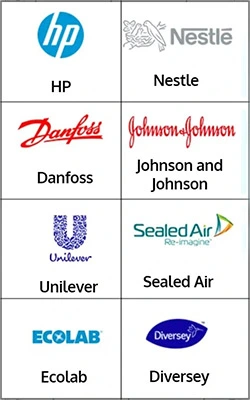
Get in Touch With Us
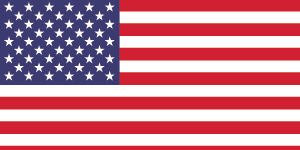
UNITED STATES
Phone:+1 307 363 1045
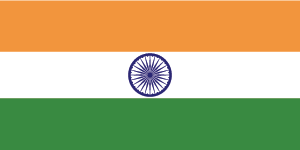
INDIA
Phone: +91 8850629517

UNITED KINGDOM
Phone: +44 7537 171117
Email: sales@procurementresource.com



